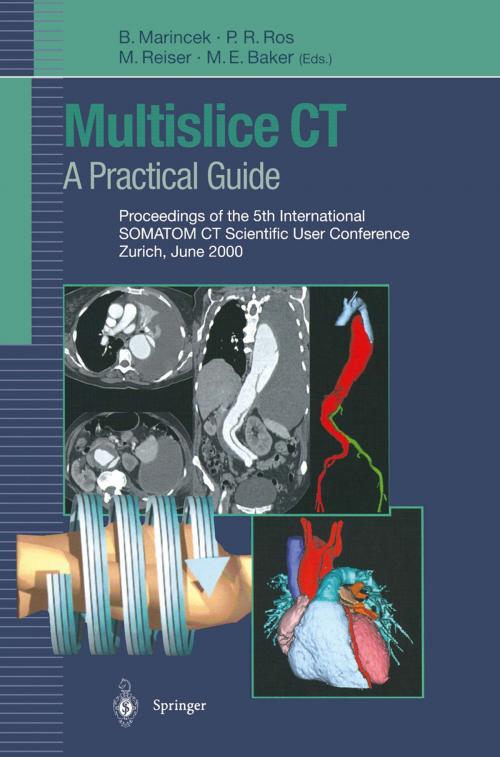Multislice CT: A Practical Guide
Proceedings of the 5th International SOMATOM CT Scientific User Conference Zurich, June 2000
Nonfiction, Health & Well Being, Medical, Medical Science, Biochemistry, Allied Health Services, Radiological & Ultrasound| Author: | ISBN: | 9783642594502 | |
| Publisher: | Springer Berlin Heidelberg | Publication: | December 6, 2012 |
| Imprint: | Springer | Language: | English |
| Author: | |
| ISBN: | 9783642594502 |
| Publisher: | Springer Berlin Heidelberg |
| Publication: | December 6, 2012 |
| Imprint: | Springer |
| Language: | English |
Until recently, CT scanner performance was limited by a series of compromises. With single-detector scanners, one cannot select thin collimation and still maintain the required extent of volumetric coverage. Slow scans cause motion artifacts that impair image quality. The introduction of multidetector CT technology, however, has revolutionized the field. Currently multidetector, multislice CT scanners acquire up to four channels of data from interweaving spirals. The minimum gantry rotation period is as low as half of a second. This increased scan speed allows for thinner collimation and thus higher longitudinal or z-axis resolution in comparison with single-detector CT. The improved image quality with multidetector technology leads to new applications of CT, particularly in cardiac, vascular, and abdominal imaging. On-going clinical studies are evaluating the suitability of this new imaging tool for non-invasive screening and diagnosis of coronary artery disease. A particular advantage to the increased scan speed in vascular imaging is the ability to cut intra venous contrast dosage and still maintain peak enhancement CT throughout the entire acquisition. Thin-section, multiphasic acquisition during optimal arterial-phase and venous-phase enhan cement significantly improves the accuracy for small lesion and vessel detection, and enhances overall classification of abdominal neoplasms. On the other hand, the increasingly large volume data sets force to new ways of looking at, presenting, storing, and trans ferring images. Networking and two- and three dimensional data processing are the key words.
Until recently, CT scanner performance was limited by a series of compromises. With single-detector scanners, one cannot select thin collimation and still maintain the required extent of volumetric coverage. Slow scans cause motion artifacts that impair image quality. The introduction of multidetector CT technology, however, has revolutionized the field. Currently multidetector, multislice CT scanners acquire up to four channels of data from interweaving spirals. The minimum gantry rotation period is as low as half of a second. This increased scan speed allows for thinner collimation and thus higher longitudinal or z-axis resolution in comparison with single-detector CT. The improved image quality with multidetector technology leads to new applications of CT, particularly in cardiac, vascular, and abdominal imaging. On-going clinical studies are evaluating the suitability of this new imaging tool for non-invasive screening and diagnosis of coronary artery disease. A particular advantage to the increased scan speed in vascular imaging is the ability to cut intra venous contrast dosage and still maintain peak enhancement CT throughout the entire acquisition. Thin-section, multiphasic acquisition during optimal arterial-phase and venous-phase enhan cement significantly improves the accuracy for small lesion and vessel detection, and enhances overall classification of abdominal neoplasms. On the other hand, the increasingly large volume data sets force to new ways of looking at, presenting, storing, and trans ferring images. Networking and two- and three dimensional data processing are the key words.















